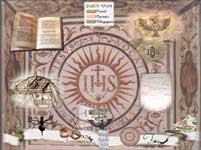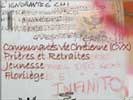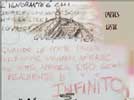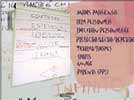|
Roots for tomorrow/Jesuit Pedagogy in Europe
The Ignatian Centre for Pedagogical Studies (CEP) asked me in 1997 to conceive and produce a CD-ROM in three languages (English, Spanish and French) on the origins, methods and key-concepts of Ignatian Pedagogy “Jesuitmodo nostro”), for laypeople.
I investigated throughout Europe, asking high schools and all kinds of Jesuit institutions, with photos, films and interviews especially in France, Italy and Spain.
It could be interesting to adapt it to a larger audience.
SitMap :
 |
Textes
<--------------
|
 |
Pratiques
------------->
spirituelles
|
 |
|
|
|
|
 |
Lieux
<--------------
|
Méthodes
--------------->
|
 |
|
|
|
|
|
Founding Texts :
- Constitutions, with the life of Saint-Ignatius of Loyola through texts (articles in several languages) and images, with a slide-show. The original text on Pedagogy from the Constitutions (one can print it).
- Spiritual Exercises, with three « visual booklets » and film interviews, and a long explanation on Evil and « The Two Standards ».
- Ratio Studiorum
- Characteristics of Jesuit Pedagogy and Project,
- Constitutions adapted for women : Female Orders under the wing of Jesuits, with Jeanne de Lestonnac (France and Spain).
Spiritual Practices:
- Christian Life Communities
- Prayer and Retreat
- Youth
- Anthology (with a filmed interview of Father Calvez by myself, quotations by Father Arrupe, foremost “General” leader of the Company of Jesus, articles)
Methods :
- Modus Parisiensis
- Cura Personalis
- An education adapted to the whole person
- Prelectio, Lectio, Repetitio,
- Tutorship/Teams
- Sports
- How to read an image
- Parents (PPE)
Places :
- At the time of Ignatius of Loyola,
- At the time of the Suppression of the Company of Jesus, at the end of the XVIIIth Century,
- Today, throughout the world, country by country.
Focus on Technical Methods used to interpret spiritual notions :
To allow the user to understand quite complex notions, we used very graphic screens, adapting the « rococo » taste of those (and these) days (tagging is an example) : for example, in the image above, we presented a text explained by a Jesuit priest (here Father Amet, s.j.), and then we submitted the text itself with a magnifying glass system of “roll-over”.
Other means and « tricks », allowing the user:
- To have access to the high schools in each city of a region or of a country, through a map (dawn, on the left, in Andalusia),
- To visit a vast document, maintaining the “click-on” which allows the map to glide as the exploration proceeds (down, to the right, through the Jesuit Provinces’ Tree),
- To have very long texts, even books, and to print them at home,
- To create a system of booklets with short films (photos becoming animated, with a roll-over), to explain more vividly the written text, next to it, and keywords (explained thanks to a Glossary),
To answer amusing but also instructive tests, like « Who said that there was no love, but only proofs of love », was it François de Sales, Marilyn Monroe, Ignatius of Loyola ? It was Marilyn, of course, but we teach in this way, that Saint Ignatius said that love is much more in acts than in words. Aperçu de la diversité et de l’acculturation :
|



